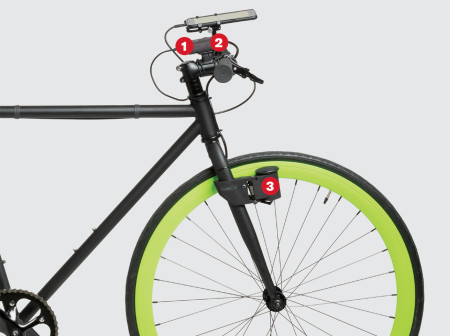A new public transportation design concept aims to once again give passengers the confidence to ride the bus. The Futurebus, designed for the COVID-19 era by an international team that includes Northwestern senior Ryan Teo, reduces contact between passengers and uses antimicrobial fabric and self-sanitizing handles. “We got our inspiration from the dandelion flower,” says Teo, an international student from Singapore who studies product design, engineering and anthropology as part of the McCormick Integrated Engineering Studies program. “The dandelion opens its petals widely, allowing its seeds to be dispersed freely. We wanted to give passengers that same freedom of movement to minimize contact.” The design won the top prize in the FourC Challenge, a 24-hour international competition sponsored by the Shanghai Jiao Tong University School of Design.
SAFELY SEATED
Every seat has a see-through barrier. The team also adjusted the floor plan and alternated seating direction to provide a cocoon of private space. “If I’m facing forward, the person next to me would be facing the other way,” Ryan Teo says. “We would be next to each other, so we’re all close, but we would not be in contact with each other.”
FABRIC UPGRADES
The seats are covered in an affordable, copper-infused fabric that is known to reduce pathogens.
OPEN AND SHUT
The bus door opens upward, altering the way passengers hop on and off the bus. The design, inspired by vertical cabinet hinge mechanisms, combines all ingresses and egresses into a single large door that runs the length of the bus. This allows riders to flow in and out freely without crossing paths.
HANDLE WITH CARE
Much like the automatic plastic toilet seat covers at O’Hare International Airport, the bus handles have a stainless steel tube covered by a disposable plastic wrap. Each time the bus stops, the handle will make a slow, 360-degree rotation, allowing the entire surface of the tube to be sterilized by a 254-nanometer UV light strip.




Reader Responses
No one has commented on this page yet.
Submit a Response